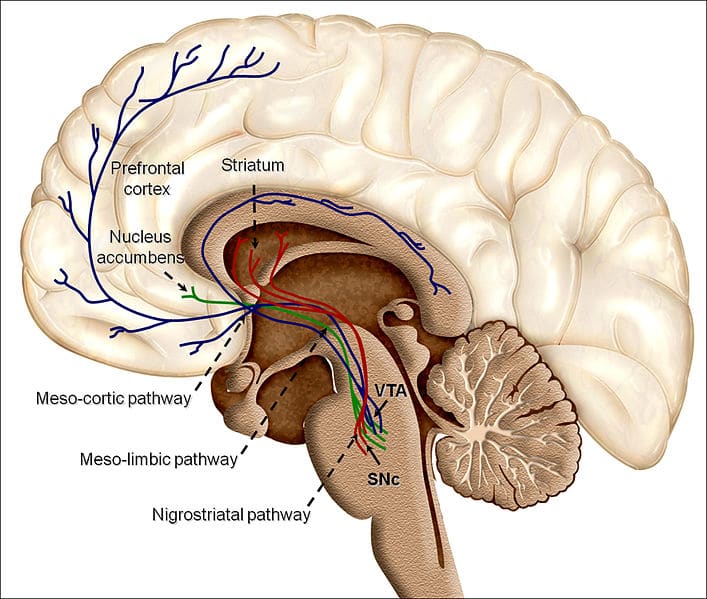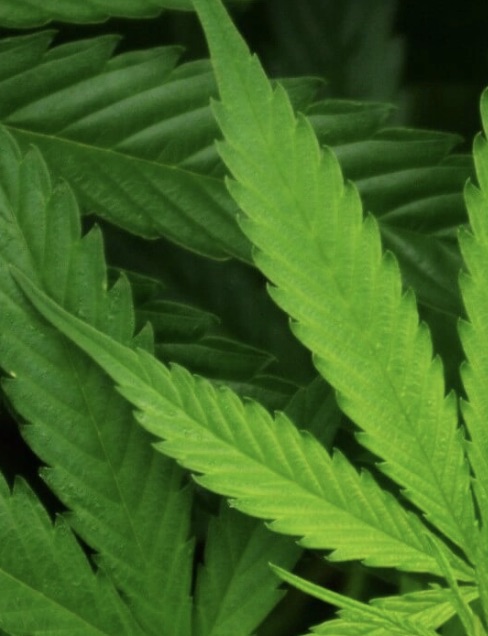If you are a long-distance runner, you’ve probably experienced the “runner’s high” take over your body.
You go into autopilot and the outside world disappears. Your legs seem to float across the pavement – and you no longer feel the stabbing shin splints, side stitches, and anything else that ails you. You are invincible. Happiness overwhelms you and all is good in the world.
This is nature’s “feel-good drug” at play.
Nature has a funny way of rewarding our brains to motivate us to survive and thrive.
Stanford Professor and Neuroscientist, Robert Sapolsky, has humorously pointed out that human behavior can all be chalked up to hormones and evolutionary mechanisms — no matter how ridiculous our behavior may seem on the outside.
I mean: why would anyone in their right mind purposely run a 26.2 mile marathon?
Evolution of Running
According to Harvard Professor of Human Evolutionary Biology, Daniel Lieberman, we were “born to run.” We can thank our hominin ancestors for the marathon — and the rewards that come with it.
Our ancestors realized they could get more calories from giant, fast-moving animals on the ground than they could from the fruit and nuts up in the trees. The problem is: gazelles run, coconuts don’t. So hunters had to find a clever way to get their prey.
What the hunter-gatherers had in their favor was the ability to keep cool with sweat, unlike the giant beasts they were after. So they adopted “persistence hunting” or “endurance hunting” as a way of slowly exhausting the animal in the heat of the day. You can think of it as the origins of the long-distance relay race.
Like a pack of dogs, our fastest runners gathered in the blistering sun to chase after that soon-to-be-juicy-steak.
One by one, the men took turns sprinting after the animal, giving the beast no time to rest. At last, the prey collapsed to the ground in exhaustion and then the hunters moved in with a sharp rock.
But our ancestors needed the motivation to get out there in the sweltering heat. So we were rewarded not only by a delicious piece of meat but also by the high of the run. We no longer need to run after our food, but the “runner’s high” has managed to stick with us throughout evolution nonetheless.
So, how does it work and how can you get more of this so-called high?
What Makes a Runner Tic? The Biopsychology of Exercise
Our brain is a machine filled with electrical circuits that control our every move. In essence, our wire-like neurons aka nerves need to communicate messages throughout our body. When an electrical signal travels to the end of the neuron, it releases little chemical soldiers known as neurotransmitters and hormones throughout our body that affect everything from our breathing to our learning and concentration right down to our mood.
All of this lays the foundation of the “runner’s high.”
<<Rediscover the way you recover>>

Endorphins make us feel good
In the late 1970s/early 80s, endorphins had their heyday. Scientists began to associate endorphins, our brain’s natural opium, with our feel-good episodes after a long hard run. But it wasn’t until 2008 that scientists could prove it with positron emission tomography (PET) scans. After a long steady run, the subjects’ prefrontal and limbic areas of the brain lit up, the reward center of the brain.

The brain’s natural opiate brings upon a state of euphoria and acts as a natural painkiller. Some scientists have speculated that this is what causes addiction to running, but we could all agree that this kind of addiction is usually a good thing.
To get those endorphins going, you simply need to get your body moving or participate in de-stressing activities like yoga or meditation. You can activate this chemical by eating dark chocolate, but please don’t try this while you are running.
Endocannabinoids produce a buzz
While endorphins might kill our pain and make us feel good, they are not the only chemicals responsible for our euphoric state after running. A 2015 German study points to the endocannabinoid system, the same system responsible for the marijuana tetrahydrocannabinol (THC) buzz, as the party behind the “runner’s high.”
The researchers discovered that when mice slap on their mini Nikes and go for a longish jog in their hamster wheels, they produce the feel-good chemical called anandamide, a lipid that binds cannabinoid receptors. When the chemical travels from the blood to the brain, it produces a “high.” That is, it can take away your race-time jitters, alleviate scorching pain from your blistery heels, and send you into a yogi-like trance.
It’s your body’s internal cannabis.
Now, the jury is still out on how it may affect your munchies. But we’ll get to that next.
Leptin gives us the hunger to go
This brings us to budding research on leptin, a hormone responsible for regulating your appetite. Harking back to our hunter-gatherer days, you’ll need to be a little hungry to want to chase your food.
The hunger for the reward – be it a medal, reaching the finish line, or obtaining that elusive “runner’s high” – may also keep you disciplined enough to train. This is precisely why some dog trainers I know abide by the philosophy of keeping their dogs a little hungry to ensure their obedience.
Researchers explain in a 2015 study published in Cell Metabolism, “the motivational effects of physical activity would presumably rise during conditions when food is scarce or costly to promote hunting, scavenging, or food hoarding, and decrease as a function of food availability and increasing leptin.”
“Ultimately, leptin is sending the brain a clear message: When food is scarce, it’s fun to run to chase some down” Maria Fernanda Fernandes, the lead researcher, told Outside Online.
But don’t starve yourself to get that high. You still need adequate nutrition and hydration to have the energy to run.
Haven’t reached the “runner’s high?
Don’t worry. Just because you have not felt the ethereal, mind-lifting experience after running doesn’t mean you won’t feel it. New runners have to get through the pain of starting a new exercise regimen.
Better yet, if you don’t like running, you can still get it. Cedric Bryant, Ph.D., Chief Science Officer for the American Council on Exercise, tells us that any repetitive exercise like cycling, swimming, or rowing can also produce the same effect. It’s your body’s meditative chanting mantra at play — no mala beads and singing bowls required.
Stay up-to-date with CBDMEDIC™. Follow us on Facebook, LinkedIn, and Instagram.
Disclaimer: This information is for educational purposes only. It has not been approved by the FDA to diagnose, treat, prevent, cure, or mitigate any diseases or conditions. We use CBD in our products for cosmetic purposes only.

